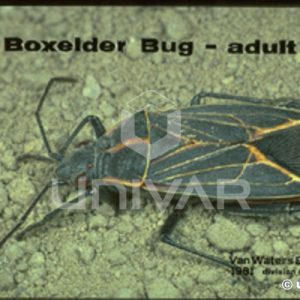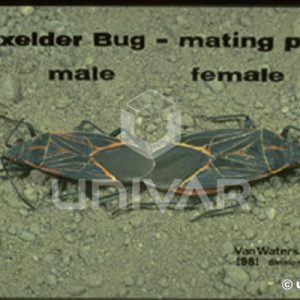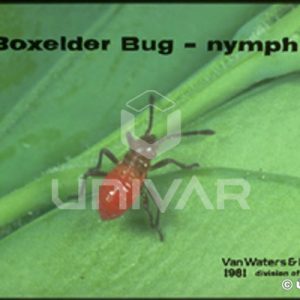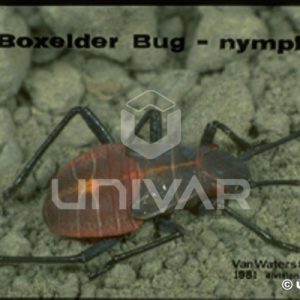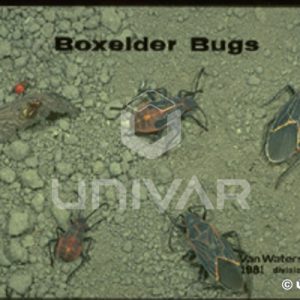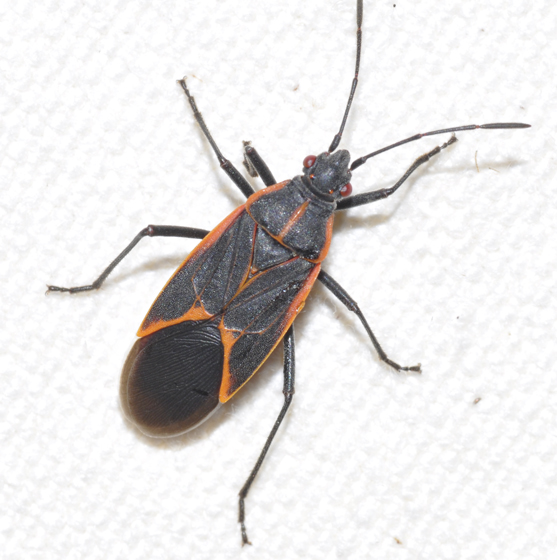
Common Name: Western boxelder bug
Latin Name: Boisea rubrolineata
Common Family Name: Scentless plant bugs
Latin Family Name: Rhopalidae
Other Names: Box elder beetle
Origin: Native to North America
Biology: This is the common western variety of the boxelder bug, feeding on various species of maple, ash, box elder, apple, grapes, and many other plants. They feed by inserting their long proboscis into the plant tissues and removing fluids, but are rarely present in such numbers as to cause any problems for the trees. The major issue with the BEB is its annoyance and presence inside structures, where it commonly seeks an over-wintering site and may occur in large numbers. It moves inside in the fall and returns to the outside in the warming months of spring, but often will become active on warm winter days as well, and be seen running around inside. It may attempt to bite if handled, but is not dangerous to people. In the fall the insects begin congregating on walls, fences, and other sunny locations. They then seek entry points to enter the structure where they settle within voids. They will not feed or reproduce indoors, but lay eggs only on the plants outside. Inside, however, they may leave stains from fecal droppings on surfaces, and if crushed will emit the same characteristic odor of other “true” bugs. Females deposit eggs in clusters of about a dozen eggs per placement, for a total of about 250 eggs. Development from egg to adult is about 2 months, and there are two generations per year.
Identification: The insects are about one half inch long and elongate oval in shape with the dorsal side flattened. Their color is dark, dull gray with red lines along the sides of the prothorax and along the veins of the wings. When at rest the wings are held flattened over the abdomen, with one wing crossing the other. Each forewing has the inner half distinctly different from the outer end, with the outer half more membranous, and with the wings folded a distinct “X” shows on the top. Nymphs begin as wingless, bright red insects, gradually turning to gray as they mature. The BEB is very similar to common “milkweed” bugs, which have broader red lines and often white spots on the thorax.
Characteristics Important in Control: The BEB feeds primarily on the developing seed pods of the box elder and maple trees, and planting male box elder trees will eliminate this food resource and make the trees less attractive. Insecticides are only mildly successful, and since little damage is done to the trees spraying is rarely advised. However, treating the surfaces the insects gather on with a labeled contact insecticide can reduce the numbers that attempt to enter the structure. Identifying entry points and permanently closing them will reduce the numbers that are able to enter, and identifying harborage sites indoors and treating, if necessary, may kill them inside. The occasional insect found wandering in the winter should be vacuumed.
